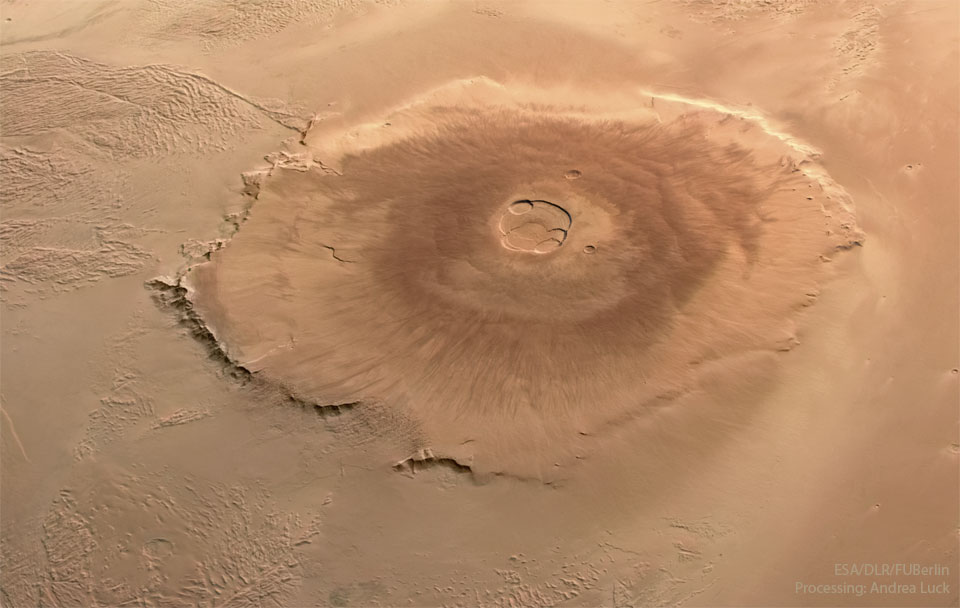Check out this aerial view of largest volcano in our Solar System

NASA's Astronomy Picture of the Day for April 4 features Olympus Mons - the largest volcano in our Solar System. Located on Mars, it is three times higher than Mount Everest, the highest mountain on Earth.
Olympus Mons is a shield volcano approximately 624 kilometers (374 miles) in diameter and 25 kilometers (16 miles) high, making it the largest volcano on Mars and the Solar System.
The volcanoes on Mars tend to be much larger compared to those on Earth. For instance, the largest volcano on Earth, Mauna Loa in Hawaii, has a diameter of about 120 km (75 miles) and is 10 kilometers (6.3 miles) high - much smaller than Olympus Mons which is 624 kilometers in diameter.
Despite its enormous size, Olympus Mons is believed to be dormant and has not erupted in millions of years. It is believed to have last erupted about 25 million years ago.
Sharing the picture, NASA wrote, "The largest volcano in our Solar System is on Mars. Although three times higher than Earth's Mount Everest, Olympus Mons will not be difficult for humans to climb because of the volcano's shallow slopes and Mars' low gravity. Covering an area greater than the entire Hawaiian volcano chain, the slopes of Olympus Mons typically rise only a few degrees at a time. Olympus Mons is an immense shield volcano, built long ago by fluid lava. A relatively static surface crust allowed it to build up over time."
This image was taken by the European Space Agency's Mars Express spacecraft which arrived at the Red Planet in December 2003 and has been in orbit around the planet ever since. The spacecraft has made a number of important discoveries, including detailed mapping of the Martian surface and detecting evidence of subsurface water, among others, and has contributed to humanity's understanding of Mars.
- READ MORE ON:
- largest volcano in our Solar System
- Olympus Mons
- Mars Express










